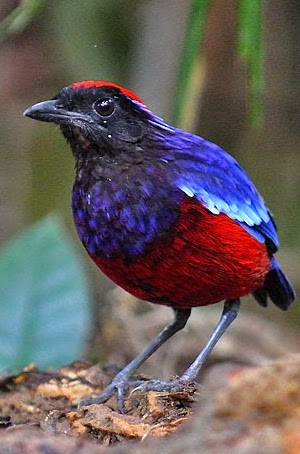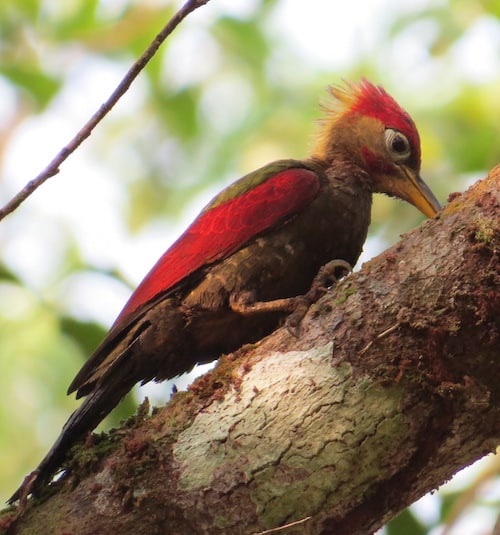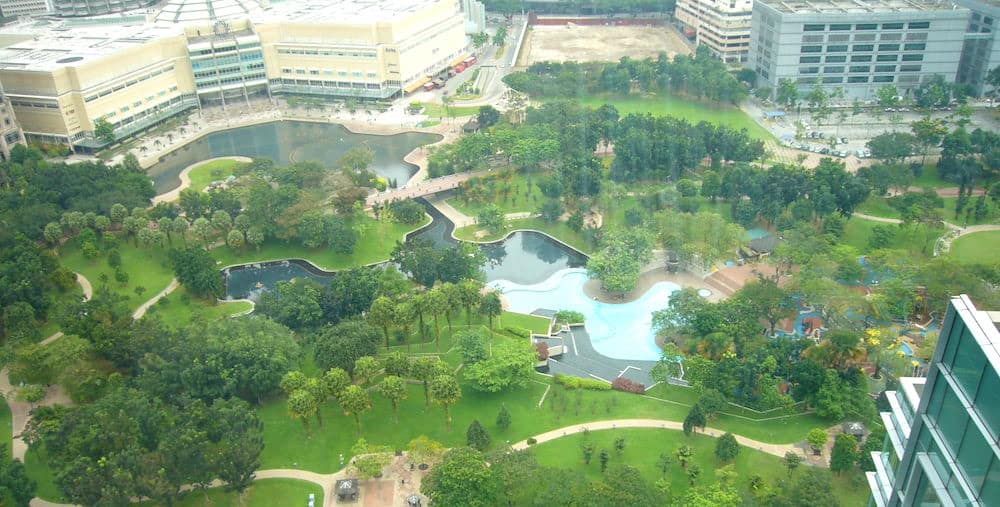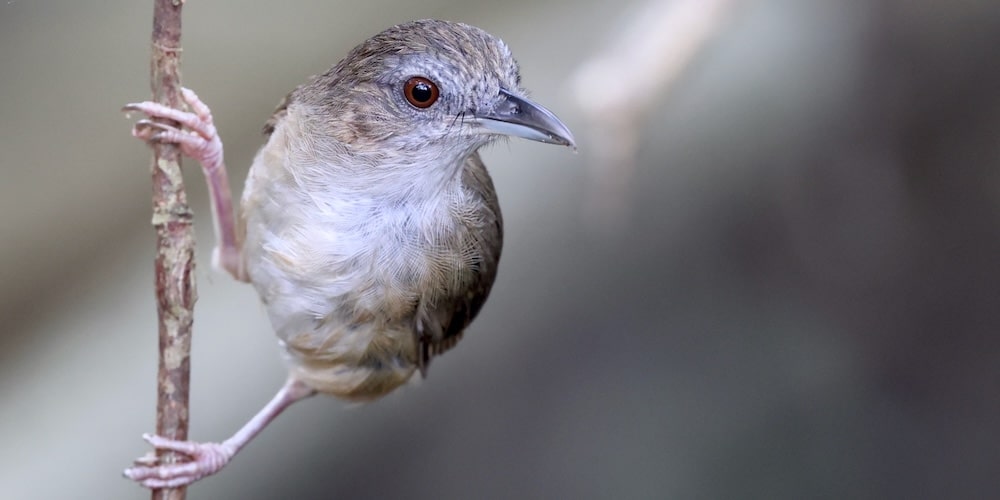Federal Territory of Kuala Lumpur

Kuala Lumpur (meaning muddy confluence in Malay), colloquially referred to as KL, is a federal territory and the capital city of Malaysia. It is the largest city in the country, covering an area of 243 km2 (94 square miles). Greater Kuala Lumpur, also known as the Klang Valley, is an urban agglomeration of nearly nine million people. It is among the fastest growing metropolitan regions in Southeast Asia, both in population and economic development. Klang Valley (Kuala Lumpur) is ASEAN’s fifth largest economy after Singapore, Jakarta, Bangkok, and Manila.
The city serves as the cultural, financial, tourism, political and economic centre of Malaysia. It is also home to the Parliament of Malaysia and the official residence of the monarch of Malaysia. Kuala Lumpur was first developed as a town serving the tin mines of the region and served as the capital of Selangor. It was the founding capital of the Federation of Malaya and its successor, Malaysia. The city remained the seat of the executive and judicial branches of the Malaysian federal government until these were relocated to Putrajaya in early 1999. However, some sections of the political bodies still remain in Kuala Lumpur.
The city is one of the three federal territories of Malaysia, enclaved within the state of Selangor, on the central west coast of Peninsular Malaysia and lies at the confluence of Gombak River and Klang Rivers. It is the 6th most-visited city in the world. The geography of Kuala Lumpur is characterised by the huge Klang Valley, bordered by the Titiwangsa Mountains in the east, several minor ranges in the north and the south, and the Strait of Malacca in the west. Protected by the Titiwangsa Range in the east and Indonesia’s Sumatra Island in the west.

Crimson-winged Woodpecker Picus puniceus – ©Lim Kim Seng
Kuala Lumpur is sheltered from strong winds and has a tropical rainforest climate; hot, humid and sunny, with abundant rainfall, especially during the northeast monsoon season from October to March. Temperatures tend to remain constant. Maximums hover between 32°C and 35°C and sometimes topping 38°C, while minimums hover between 23.4°C and 24.6°C and have never fallen below 17.8°C. Kuala Lumpur typically receives at least 2,600 mm (100 in) of rain annually; June to August are relatively dry, but even then rainfall typically exceeds 131 millimetres (5.2 in) a month. Kuala Lumpur is highly prone to severe thunderstorms and lightning strikes.
The Klang Valley, including Kuala Lumpur, is one of the places where thunderstorms are most frequently observed on Earth. Floods are frequent in Kuala Lumpur after heavy downpours, especially in the city centre, because irrigation structure lags behind the intense development in the city. Smoke from forest fires in nearby Sumatra and Kalimantan sometimes casts a haze over the region, and is a major source of pollution, along with open burning, motor vehicle emissions, and construction.
Birding Kuala Lumpur
The Perdana Botanical Garden or Lake Gardens, a 92-hectare (230-acre) botanical garden, was the first recreational park created in Kuala Lumpur. The Malaysian Parliament building is located close by, and Carcosa Seri Negara, which was once the official residence of British colonial administration, is also sited here. The park includes a butterfly park, deer park, orchid garden, a hibiscus garden, and the Kuala Lumpur Bird Park, which is the world’s largest aviary bird park.

KLCC Park – ©Jordiferrer, CC BY-SA 3.0 via Wikimedia Commons
Other parks in the city include the ASEAN Sculpture Garden, KLCC Park, Titiwangsa Lake Gardens, Metropolitan Lake Gardens in Kepong, Taman Tasik Permaisuri (Queen’s Lake Gardens), Bukit Kiara Botanical Gardens, the equestrian park and West Valley Park near Taman Tun Dr Ismail (TTDI), and Bukit Jalil International Park.
There are three forest reserves within the city, the Bukit Nanas Forest Reserve in the city centre, the oldest gazetted forest reserve in the country 10.52 ha or 26.0 acres, Bukit Sungai Putih Forest Reserve (7.41 ha or 18.3 acres) and Bukit Sungai Besi Forest Reserve (42.11 ha or 104.1 acres). Bukit Nanas, in the heart of the city centre, is one of the oldest virgin forests in the world within a city. These residual forest areas are home to a number of species, particularly monkeys, treeshrews, pygmy goats, squirrels, feral budgerigars and other birds. A walk in any of the parks can turn up some surprising birds as well as guarantee a range of locally common species.

Abbott’s Babbler Malacocincla abbotti – ©Bird-Photo-Tours ASIA
Apart from the area immediately around the city there are several birding sites within easy reach, notably Frasers Hill, which is about 100 kilometres from the City and Kuala Selangor Nature Park (less than 80k.) For anyone on a few days stopover these unique areas are the prime targets as they hold species that are very much harder to see elsewhere.
-
Taman Rimba Ampang
InformationSatellite ViewTaman Rimba Ampang, part of the Selangor State Park, is located a few kilometers away from the tallest twin-tower in the world - KLCC twin tower. It is a great alternative for birders who can only spend a day or two in Malaysia. This small patch of forest is a recreational forest with a small stream flowing along the main walking path. Over the years, many birdwatchers have frequented this spot and found several jewels including rufous-backed kingfisher, blue-banded kingfisher, red-bearded bee-eater, emerald dove, banded broadbill, and gold-whiskered barbet.
-
Cheong Weng Chun
Selangor
https://www.birdingpal.org/Malaysia.htm
-
A Checklist of the Birds of Peninsular Malaysia
| By MNS Bird Conservation Council | Malaysian Nature Society | Edition 2 | 2010 | Paperback | 0 pages, 1 b/w map, tables | ISBN: 9789839681482 Buy this book from NHBS.com -
A Field Guide to the Birds of Malaysia Including Sabah and Sarawak
| By Lim Kim Seng, Yong Ding Li, Lim Kim Chuah & Dana Gardner | ohn Beaufoy Publishing | 2024 | Paperback | 396 pages, 170 plates with colour illustrations; colour photos, 2 colour maps | ISBN: 9781913679712 Buy this book from NHBS.com -
A Field Guide to the Birds of Peninsular Malaysia and Singapore
| By Allen Jeyarajasingam & Alan Pearson | Oxford University Press | Edition 2 | 2012 | Paperback | 628 pages, 74 colour plates, b/w illustrations, 2 b/w maps | ISBN: 9780199639434 Buy this book from NHBS.com -
A Naturalist's Guide to the Birds of Fraser's Hill and the Highlands of Peninsular Malaysia
| By Geoffrey Davison | John Beaufoy Publishing | 2019 | Paperback | 176 pages, ~300 colour photos, 2 colour maps | ISBN: 9781912081547 Buy this book from NHBS.com -
Birds of Malaysia
| By hong Leong Puan, Geoffrey Davison & Kim Chye Lim | Lynx Edicions | 2020 | Hardback | 413 Pages, maps, illustrations | ISBN: 9788416728299 Buy this book from NHBS.com
-
Malaysian Nature Society
WebsiteBased in Kuala Lumpur…
-
FR Ampang Recreational Forest
InformationSatellite ViewPopular with birdwatchers, the Ampang Water Catchment Area was given protected status during colonial times as an intake point for piped water for the city of Kuala Lumpur. The Ampang Intake Point and treatment plant is still in operation just upstream of the recreational forest. The road to the intake point provided easy access from Kuala Lumpur via Jalan Ampang. This accessibility combined with the peaceful serenity of the location caused the state government to set aside the forest for public amenity. -
WR Bukit Nanas
InformationSatellite ViewAmidst Malaysia's sprawling concrete jungle metropolis of Kuala Lumpur lays a remnant of the country's pre historic tropical rainforest. This ancient virgin jungle ecosystem flourished at the core of the Bukit Nanas Forest Reserve…
-
Bird Photo Tours ASIA
Tour OperatorThis Bird-Photo-Tour will aim to produce close photographic encounters with some of the most appealing, unique, distinctive and specialised birds to be found in Peninsular Malaysia including Pittas, Trogons, Broadbills, Hornbills, Pheasants, Partridges, Kingfishers, Laughingthrushes, Owls, Babblers, Bee-eaters, Barbets, Sunbirds and Bulbuls. -
Endemic Guides
Tour OperatorDay Kuala Lumpur Surrounding Birding Tour -
Malaysian Birding Tours
Tour OperatorWe offer a range of customised birding tours around Malaysia. From day trips to see Mountain Peacock Pheasant to a 14 day tour to bump up your life list, we aim to provide an incredible birding experience through a combination of local knowledge and experience in one of the world's mega-diverse country.
-
Kuala Lumpur Bird Park
WebsiteLocated in the serene and scenic Lake Gardens, close to the Orchid Garden and the Tun Abdul Razak Memorial, the Bird Park is one of the largest covered bird park in the world, sprawling 8 acres of verdant valley terrain. Here, for the first time in Malaysia, bird lovers can have a field day watching more than 3000 birds perching and winging about freely-in a totally natural and beautifully landscaped enviroment


